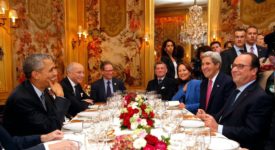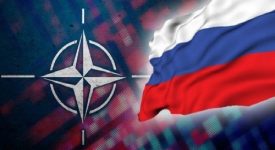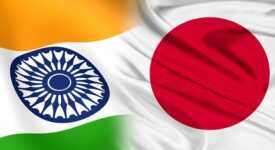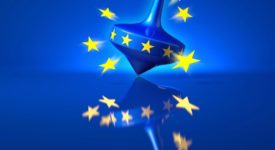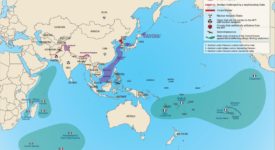Exclusive Interview with Professor David Camroux (Paris Institute of Political Science)
EUBULLETIN has talked to Professor David Camroux – Senior Lecturer in Asian Studies at Sciences Po in Paris – about European Union’s FTA negotiations with Japan, on its economic competition with the U.S. in Asia, and whether the EU is a model or inspiration for other regional integration processes.
EUBULLETIN: You are one of Europe’s leading experts on Asia and EU’s own relations with that region. In one of your earlier interviews you argued that out of the two major FTAs currently being negotiated – the TTIP and TTP, it is the former that will be concluded first. Why?
D.Camroux: The Transatlantic Investment Partnership (TTIP) may come first before the Transpacific Partnership (TPP) for a number of reasons but perhaps the most important one is that political will on both sides is, I think, stronger in the TTIP than in the TPP case. You have problems with Japan, in Malaysia, you know, that can make it more difficult to reach the TPP deal.
EUBULLETIN: What about Japan and the EU’s attempt to negotiate an FTA deal with this Asian economic powerhouse?
D.Camroux: As to Japan, the US would not be concerned about the cost of labor there but the main stumbling point in the TTP negotiations would be agriculture. The EU knows this because it is also negotiating with Japan. The EU already has this EU-Korea FTA which was a success – the fact that Korea may think that it had given up too much is a result of a pure power asymmetry. But the whole point about the EU agreement with Japan, as with its agreement with Canada, is that they had the same strategic objective, which was to set the benchmark and create a lever afterwards to be used during the negotiations with the US.
EUBULLETIN: Before the EU started negotiating an FTA with South Korea, Japan was not really interested in negotiating an FTA with the EU. Why then, after the Korea-EU FTA got into effect, Japan suddenly expressed their interest to try to negotiate an FTA with the EU?
D.Camroux: This is this kind of rationale or driving element behind a Free Trade Agreement – the fear to be left out, especially why smaller countries want to be part of FTAs. It is the fear that if they don’t jump in, they would be left out. And certainly the EU-Korea FTA had that effect – just take one issue: flat-screen televisions, the Japanese proportion declined massively while the Korean proportion of exports to the EU increased dramatically. So, what I mean is that it has had its effect.
EUBULLETIN: But the US is currently also trying to negotiate its own FTA deal with Japan.
D.Camroux: Yes, but the Japanese have more issues with the US and other TPP members, namely agricultural issues, than they do with the EU. You know that the EU basically shares that kind of sympathy with the Japanese ideal emphasizing that the important role of agriculture in the economy and society should be protected and safeguarded. Also, we should also note that the EU is also not a major exporter of agricultural produce outside of the EU. So, it is going to be easier for the Japanese to do an agreement with the EU than the US.
EUBULLETIN: If we go beyond economics and trade, talking about the peculiarities of the European Union as a global actor in Asia, how do you personally view the EU’s attempt to export its model of inter-regional integration to this part of the world?
D.Camroux: I am a firm believer in the European project of an ever closer union, and more generally also in the imperative to promote systems of supranational governance in an interdependent and increasingly globalized world. And I also hope that the idea of European citizenship will increasingly prevail over parochial nationalist concerns. Having said that, I do not believe that the EU provides a model to be replicated in the case of other regional integration processes.Some EU leaders, including Romano Prodi and Javier Solana, have seen the EU model as an export product. However, the promotion of the EU model is not so much a foreign policy tool employed by the EU to achieve its strategic objectives on the global stage, but it is rather an end in itself. The promotion of intra-regional integration in other parts of the world can, in the EU’s case, be seen as a normative goal or an attempt at self-projection in a global context.
EUBULLETIN: Yet, the obvious question is, if the EU is not a model, then what is it?
D.Camroux: Some colleagues would probably say: the EU serves as an inspiration. My own view is that the EU provides a kind of reference point – but not so much because of its special qualities or appeal but rather actually by default. Why? Because it is a sui generis global actor and many of its unique aspects and features, such as the single euro currency, often constitute the only case study to be analyzed and be inspired by.


